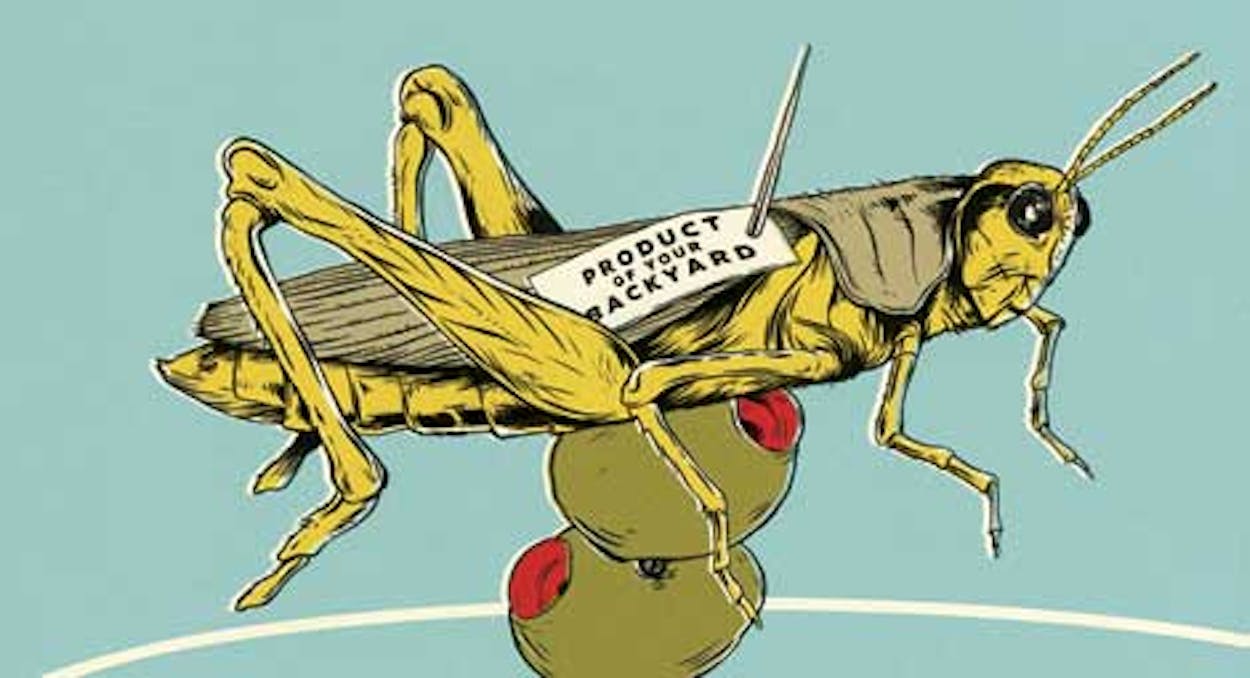Not since Homo erecti were bringing down woolly mammoths with atlatls has eating been such an exhausting activity. No longer is it enough to never eat anything with a face or a carbohydrate; now you’re supposed to consume only food that has been produced within a few hundred miles of your home. “Locavores,” as propagators of this philosophy are called (and not just because they know many tasty ways to prepare locusts), will give you lots of excellent arguments for going local: Your food will taste better; you’ll be keeping money in the local economy; you’ll know how your meat and poultry are raised. Chickens in giant factory farms, they tell us, have a particularly bleak time of it. They spend their lives crammed into tight enclosures. They never see the sun, walk on grass, or have sex. They are pumped full of unnatural chemicals and made to produce around-the-clock. Can’t the same be said of Dell employees? I don’t believe I should let my heart bleed for a chicken until the last cube farm has been shut down and all our nation’s programmers are allowed to range free.
But the locavores have a more compelling reason for me to put an odometer on my mouth. From field to fork, an average dinner travels 1,500 miles, meaning every meal in America slurps up 1.1 million barrels of oil a week. Our rapacious hunger for tomatoes in January is partially responsible for global warming, enslavement to oil cartels, and some really unappetizing pico de gallo being served at Super Bowl parties.
I spent big chunks of my military-brat childhood stationed on overseas air bases, where each morsel came with the whiff of jet fuel and many frequent-flier miles. “Carbon footprint” was not a concept we bothered with when we were shoveling down the SpaghettiOs on Okinawa. Nor did my family cater to other food fripperies such as taste, nutritional value, or toxicity. Slinging three meals a day for her ravening family of eight helped my mother reduce her culinary credo to its barest essentials: Keep the Young’uns Alive. If that meant eating Skippy-Peanut-Butter-and-Welch’s-grape-jelly sandwiches on miraculously squishy Wonder Bread while hiking up Mount Fuji, so be it.
In short, I have a lot of “food miles” to atone for—which is why I turn to the gajillion Eat Local Web sites out there. Penance starts immediately: Locavore lingo is its own special punishment. They speak of “victual reality” and eating “within your foodshed.” They discuss an edible’s “provenance,” its place of origin, as if it were a Ming vase. But the prickliest hair shirt is “source” used as a verb. Relentlessly. As I read of zealots “sourcing” heirloom tomatoes and “sourcing” pasture-raised chickens and “sourcing” unpasteurized milk, I waver. Then I recall all those Little Debbie cakes I packed away while viewing the Kamakura Buddha, and I carry on.
Like many writers before me, I decide to take the Eat Local pledge, vowing to consume nothing for an entire year that has not been raised within my local foodshed. With one key difference: My year will be more like a day. Maybe two. I’ll see how things go.
Day one: Meal planning as a locavore is a challenge but one I am determined to meet and, in my own inimitable overachiever way, exceed. Let the lightweights foodshed and source from a one-hundred-mile range. I am going to go truly local and limit myself to a one-hundred-yard range. Yeah, that’s right: my own house and yard. Suck on that, Loservores!
I present my family with the first day’s menu: Breakfast will be a frittata of fire-ant eggs accompanied by a hackberry coulis. Coffee, so hard to source outside the “bean belt” hugging the equator, is a major bugaboo for many an otherwise-sanctified locavore. I am happy to report that it will not be a problem for my family, since I’ve already sourced an artisanal, fair-trade meth lab right in my own neighborhood. More pep than caffeine, with zero footprint.
Lunch starters will be pâté from our own free-range squirrels followed by a ragout of dust bunny. For dinner we’ll be dining on plank-roasted plank of mesquite accompanied by a terrine of witchetty grub caramelized with shower scum. A sweet finish will be provided by Tarte au Poire Epineux—prickly pear pie, for all you carbon hogs—made with flour I grind myself out of acorns left behind by the squirrels used in the pâté. They won’t be needing them anymore. I love being part of the cycle of life. Not just eating what I kill but eating what my kill eats.
My menu presentation is interrupted by unseemly gagging and retching. Clearly my husband and son are terrorists who want to keep America addicted to foreign oil. Fortunately, the locals provide an out for such weaklings: the Marco Polo Exemption. This Eat Local loophole lets you partake of any spices a thirteenth-century explorer would have carried and has been extended by locavores to include other necessities like chocolate and Pumpkin Spice Frappuccinos. Choosing to go with a different brave explorer, I invoke the Buzz Aldrin Exemption, which will allow us to consume anything that has been in orbit. So it is Tang for breakfast and freeze-dried ice cream sourced from a survivalist Web site in Utah for dessert.
That evening is my bunco night. After scrutinizing the appetizers, I ask our hostess where she sourced the flour and pork used in her pigs in a blanket.
“They’re Poppin’ Fresh rolls and Lit’l Smokies cocktail franks.”
Right in the middle of telling her that sausage is made of pig nostrils and the Pillsbury Doughboy is the Antichrist, she sticks a margarita in my hand and leaves. With nothing but Sasquatch-size carbon footprint edibles defacing the buffet table, I am thrilled to find a meager handful of local pecans to nibble on. Complaints about my “eating the centerpiece” confirm that, once again, I have fallen in with a cell of terrorists dedicated to keeping our country in thrall to the petro-sheikhs.
Day two: I decide to delight my family with honey gathered from an unusually busy hive in the backyard.
As the nurse starts an IV drip for pain from the killer-bee stings, I ask where she sources her morphine. After assuring me that she grew the poppies herself, I submit. A few minutes later, as relaxed as an opium smoker, I see that this whole complicated eating process can be pared down to one imperative that has stood the test of time: Keep the Young’uns Alive. It comes with the Little Debbie Cake Exemption.









